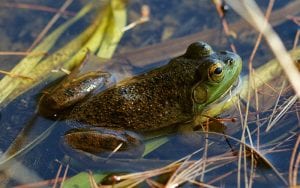Read the latest in forest news and updates from American Forests staff and programs in this week’s Forest Digest!
Forest News

- India’s Response to the Paris Agreement: Plant 66 Million Trees in Just 12 Hours – Forbes
Talk about cooperation. Last Sunday in India, 1.5 million people gathered to plant an astonishing 66 million trees in only 12 hours, breaking their own Guinness World Record from last year. To put this feat in perspective, that’s the equivalent of the entire population of Philadelphia working toward a common goal of reforestation. - In Austin, the air smells of tacos and trees – and city-state conflict – The Washington Post
Citizens of Austin are trying out a new conservation tactic: naming their trees in an effort to save them from being bulldozed due to new development. All protected under a city ordinance, I’m sure Patsy Cline, Waylon Jennings and Willie Nelson are more than grateful for their human advocates. - Bridgeland builds its own community tree house – The Houston Chronicle
In Bridgeland, Texas, a new community tree house has been added to the city’s growing list of public amenities. Peter Houghton, vice president of master planned communities of Bridgeland Development, says, “The Tree House is a great example of the Bridgeland vision to provide our residents with unique or unusual amenities that add character and identity to the community.” - Youth Brigade Aims to Close Tree Canopy Gap in East Boston– WBUR.org
When a group of ten high school students discovered that East Boston sidewalks have “just 15 percent of the ideal number of trees,” they knew something had to be done. Their goal is to double that percentage, and they plan to plant 2,000 new trees in response to extreme heat and pollution. - In the egg, American bullfrogs learn how to avoid becoming lunch – ScienceDaily
It turns out American bullfrogs are strengthening their defenses before even leaving the egg. According to a new study by researchers at Oregon State University, “These embryos can learn about new predators while they are still in the egg, and they behave and develop differently after they hatch based on that learning.”